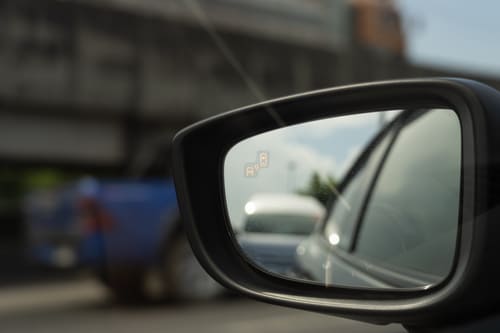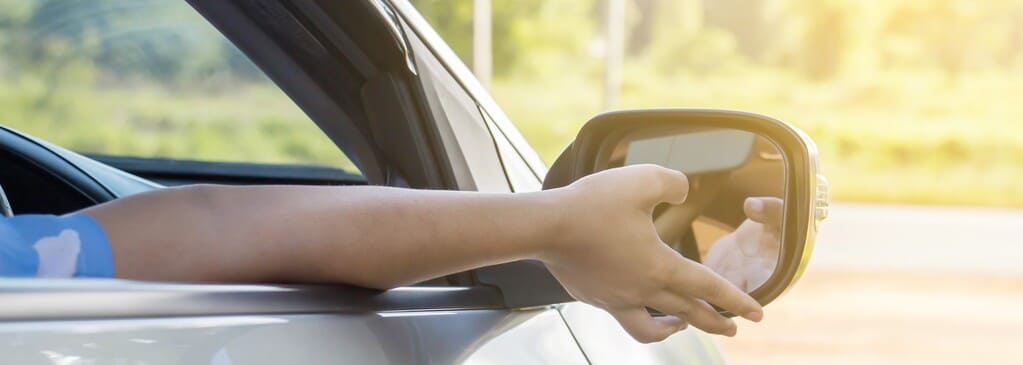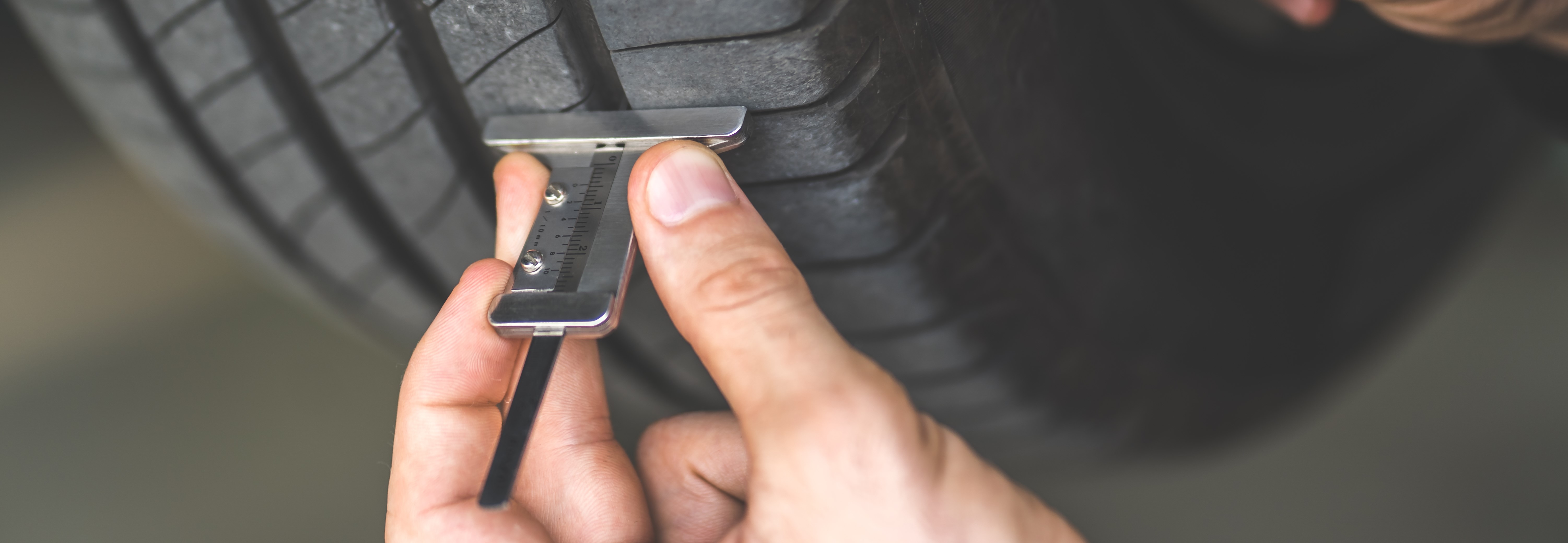The role of rear view mirrors…
The rear view mirror is one of three car mirrors which critically improve your visibility on the road, allowing you to monitor the traffic behind the vehicle and quickly detect safety hazards when manoeuvring or parking. The mirror is installed on the inside of the car windscreen and angled in a way that provides a clear view of the road directly behind the vehicle. This is particularly important when making turns, changing or merging onto lanes, reversing, parking and entering roundabouts. The mirror allows you to make safe, snap decisions without having to turn your head, preventing serious collisions.
The car interior mirror glass is usually flat and therefore reflects an undistorted image, allowing drivers to more accurately gauge the size, distance and speed of the objects behind. Car wing mirror glass, on the other hand, is normally curved (convex glass) to increase the field of vision. The downside of this is that objects can appear to be further away than they actually are. When all three mirrors are used in combination, the driver’s blindspots should be effectively minimised.
The rear view component typically features a switch which allows you to ‘flip’ the mirror to reduce the glare from the car headlights behind you when driving at night. Nowadays, many modern cars feature auto-dimming rear view mirrors which contain an electrochromic gel. The gel reacts with an electric current, causing it to change colour and automatically dimming the mirror.
When do you use an extra interior rear mirror?
These are used during driving tests so that the examiner also has a view of the road behind and can check for hazards. This way, they can determine whether you are paying attention to your surroundings and can react in the event of an emergency.

How to adjust the mirror
Before you start adjusting the mirror, you should make sure that you’re sitting comfortably in the driver’s seat as though you are about to set off in your car. Once you are in a position where you can easily reach the pedals and car gear stick, your interior rear view mirror can be adjusted accordingly. Hold it by its plastic housing and gently move it to the left or right until you’re able to see directly out of the centre of the rear window without turning your head. There should be a full view of the rear window and you should be able to see it on both sides of the mirror. Additionally, drivers over 6 ft may want to reposition the component so that it’s upside down, raising the bottom of the glass by a couple of inches and thereby reducing blindspots for tall drivers.
The interior mirror is a legal requirement in the UK. If the glass gets damaged or comes loose, you aren’t legally allowed to drive the vehicle until it has been replaced. You could end up with a hefty fine if you’re caught doing so and endangering yourself and other road users.
Replacing the rear view mirror
With most cars, you aren’t able to replace the rear view mirror glass by itself and have to replace the entire unit. Thankfully, most aftermarket mirrors are affordable with prices starting around £10-15. However, the replacement cost will depend on the specific vehicle model and the left and right wing mirror for car specifications.
TOP products on the subject:















































